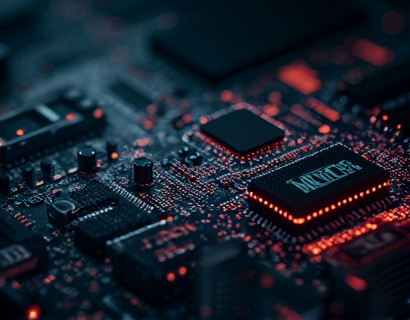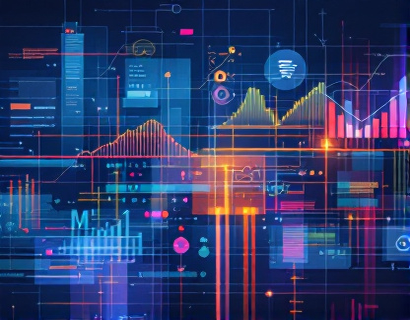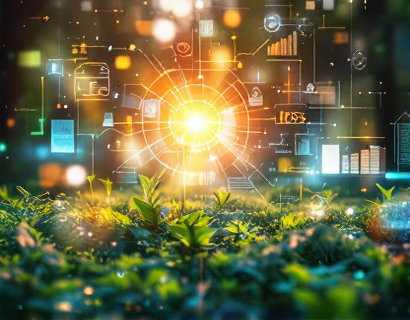Empowering Precision Agriculture: Leveraging Advanced Analytics for Sustainable Horticulture and Farming
In the quest for sustainable agriculture, precision farming emerges as a pivotal strategy, harnessing the power of advanced analytics to optimize resource management and enhance crop yields. This approach, often referred to as Agricanalytics, integrates data from various sources to provide actionable insights, enabling farmers and horticulturists to make informed decisions. The goal is to create a more efficient, productive, and environmentally friendly agricultural system.
The foundation of precision agriculture lies in the collection and analysis of vast amounts of data. Sensors, drones, satellite imagery, and IoT devices gather real-time information on soil conditions, weather patterns, plant health, and more. This data is then processed using sophisticated algorithms and machine learning techniques to identify trends, predict outcomes, and recommend optimal practices. By leveraging these advanced analytics, agricultural professionals can tailor their methods to specific field conditions, reducing waste and maximizing productivity.
Optimizing Resource Management
One of the primary benefits of precision agriculture is the optimization of resource use. Traditional farming methods often apply water, fertilizers, and pesticides uniformly across fields, leading to overuse in some areas and underuse in others. Precision agriculture addresses this by providing detailed maps and real-time data, allowing farmers to apply resources precisely where they are needed. This targeted approach not only conserves resources but also reduces environmental impact.
For instance, soil moisture sensors can monitor the water content at different depths and locations within a field. This data helps farmers adjust irrigation schedules and volumes, ensuring that crops receive the exact amount of water they need without excess. Similarly, nutrient sensors can detect the specific nutrient levels in the soil, guiding the application of fertilizers to prevent over-fertilization and runoff. By optimizing the use of water and fertilizers, farmers can lower costs and minimize their ecological footprint.
Enhancing Crop Yields
Advanced analytics also play a crucial role in boosting crop yields. By analyzing historical and real-time data, farmers can identify the most productive areas of their fields and the factors contributing to higher yields. This information can be used to refine planting strategies, select the best crop varieties, and implement precise management practices.
Machine learning models can predict the optimal planting dates based on weather forecasts and soil conditions, ensuring that crops are planted at the most favorable times. Additionally, these models can forecast potential pest and disease outbreaks, allowing for proactive measures to protect crops. By combining these insights, farmers can achieve higher and more consistent yields, contributing to food security and economic stability.
Promoting Sustainable Practices
Sustainability is at the core of precision agriculture. The data-driven approach enables farmers to adopt practices that are not only productive but also environmentally responsible. By reducing the overuse of resources and minimizing chemical inputs, precision agriculture helps preserve soil health, protect water quality, and maintain biodiversity.
For example, precision application of pesticides and herbicides targets only the areas affected by pests and weeds, reducing the overall use of these chemicals. This targeted approach decreases the risk of contamination to non-target species and reduces the development of resistant strains. Moreover, by optimizing irrigation, farmers can prevent soil erosion and maintain groundwater levels, ensuring the long-term viability of their land.
Case Studies and Real-World Applications
Several case studies demonstrate the tangible benefits of precision agriculture. In one instance, a large-scale farm in the Midwest implemented a precision irrigation system that used soil moisture sensors and weather data to optimize watering schedules. The result was a 20% reduction in water usage without compromising crop yields. Another example involves a horticulture operation that utilized drone-based imaging to monitor plant health and detect early signs of stress. This allowed the farm to address issues promptly, leading to a 15% increase in fruit quality and yield.
These successes highlight the potential of precision agriculture to transform traditional farming practices. By embracing advanced analytics, farmers and horticulturists can achieve greater efficiency, sustainability, and profitability.
Challenges and Considerations
While the benefits of precision agriculture are clear, there are challenges that need to be addressed. One significant barrier is the initial cost of implementing advanced technologies. Sensors, drones, and data analytics platforms can be expensive, particularly for small-scale farmers. However, the long-term savings and increased yields often justify the investment.
Another challenge is the need for technical expertise. Farmers and agricultural professionals must be trained to collect, analyze, and interpret data effectively. Educational programs and support services are essential to bridge this knowledge gap. Additionally, data privacy and security are critical concerns, as the collection and storage of agricultural data must be managed responsibly to protect sensitive information.
Future Trends and Innovations
The field of precision agriculture is rapidly evolving, with ongoing innovations poised to further enhance its capabilities. One emerging trend is the integration of artificial intelligence (AI) and deep learning to improve data analysis and decision-making. AI can process complex datasets to identify patterns and make predictions with higher accuracy, providing even more precise recommendations for farmers.
Another area of development is the use of blockchain technology to ensure data integrity and traceability. By recording transactions and data exchanges on a blockchain, stakeholders can verify the authenticity and quality of agricultural products, enhancing trust in the supply chain. Furthermore, the development of more affordable and user-friendly devices, such as low-cost sensors and mobile apps, will make precision agriculture accessible to a broader range of farmers.
Conclusion
Precision agriculture, powered by advanced analytics, offers a transformative approach to sustainable horticulture and farming. By optimizing resource management and enhancing crop yields, this data-driven methodology supports environmental stewardship and economic viability. As technology continues to advance, the potential for precision agriculture to reshape the agricultural landscape is immense. Embracing these innovations is essential for building a more sustainable and resilient food system for future generations.










































